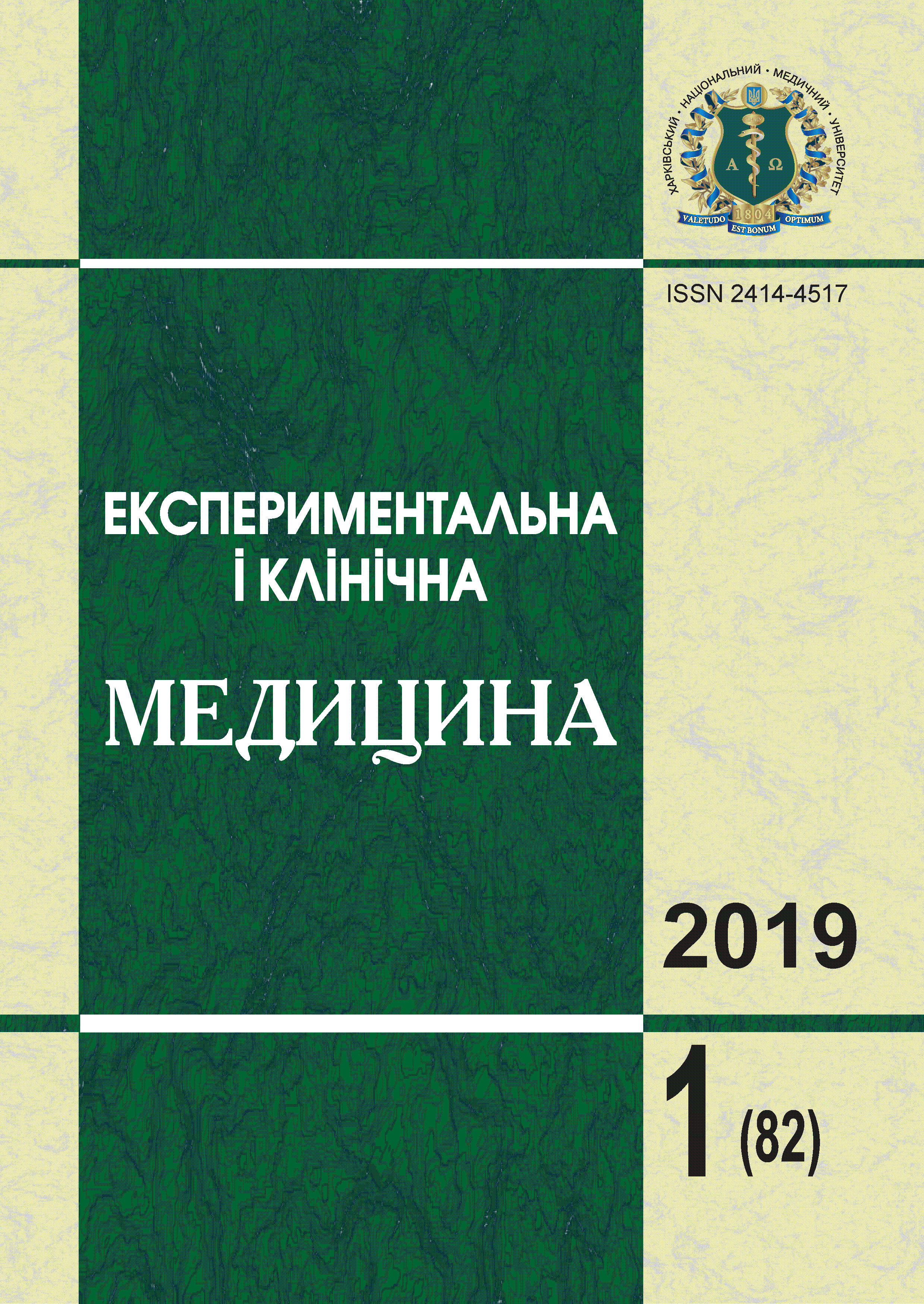Abstract
Our research was dedicated to the examination of maxillary sinuses because they are more frequently connected with pathological processes. Maximal bone density on the lateral wall (187,2±9,3) Hu on the left and (181,9±8,3) Hu on the right and minimal bone density on the medial wall (122,1±7,9) Hu on the left and (144,0±6,3) Hu on the right was described during our research. The bone response (mainly inferior wall of the maxillary sinus) on the inflammation with increasing of the bone density from (165,0±7,7) Hu to (126,90±6,47) Hu on the left and from (175,60±8,21) Hu to (122,40±4,32) Hu on the right was also described.References
Murtaza Mustafa, Patawari P., Iftikhar Н.М. et al. (2015). Acute and Chronic Rhinosinusitis, Pathophysiology and Treatment International. Journal of Pharmaceutical Science Invention, vol 4, Issue 2. February, рр. З0–36.
Ryazantsev S.V., Konoplev O.I., Krivopalov A.A. (2015). Protivovospalitelnaya terapiya ostrykh rinosinusitov s ispolzovaniyem preparata na osnove ketoprofena lizinovoy soli [Anti-inflammatory therapy of acute rhinosinusitis with the use of the drug on the basis of ketoprofen lysine salt]. Meditsinskiy sovet – Medical advicet, № 15, рр. 8–9 [in Russian].
Haim Gavriel, Basel Jabarin, Ofer Israel, Ephraim Eviatar. (2018). Conservative Management for Subperiosteal Orbital Abscess in Adults: A 20-Year Experience. Ann Otol Rhinol Laryngol, Jan 1, рр. 1.
Fokkens W.J., Lund V.J., Mullol J. et al. (2012). EPOS 2012: European position paper on rhinosinusitis and nasal polyps 2012. A summary for otorhinolaryngologists. J. Rhinology. vol. 50 (1), рр. 10–12.
Krivopalov A.A. (2016). Rinosinusit: klassifikatsiya. epidemiologiya. etiologiya. lecheniye. [Rhinosinusitis: classification, epidemiology, etiology, treatment]. Meditsinskiy sovеt – Medical advicet, № 6, рр. 22 [in Russian].
Pirimoglu B., Sade R., Sakat MS., Ogul H., Levent A., Kantarci M. (2018). Low-Dose Noncontrast Examination of the Paranasal Sinuses Using Volumetric Computed Tomography. J Comput Assist Tomogr. May/Jun; 42 (3), pp. 482-486.
Hofer M. (2008). Kompyuternaya tomografiya. Bazovoye rukovodstvo. [Computed tomography Basic Guide]. 2-e izdaniye. pererabotannoye i dopolnennoye. Moskow: Med.lit, 224 p. , рр. 20 [in Russian].
Palchun V.T., Magomedov M.M., Luchikhin L.A. (2011). Otolaringologiya: uchebnik. [Otolaryngology: a textbook]. 2-e izdaniye. Moskow: GЄOTAR-Media, 649 р., рр. 84–85[in Russian].
Babiak V.I., Govorun M.I., Nakatis J.A. (2009). Otolaringologiya. [Otolaryngology]. Rukovodstvo v 2 tomakh. T-1. Spb.: Piter. 832 р., рр. 53 [in Russian].
Kaya M., Çankal F., Gumusok M. et al. (2017). Role of anatomic variations of paranasal sinuses on the prevalence of sinusitis: Computed tomography findings of 350 patients. Niger J Clin Pract., Nov; 20 (11), pp. 1481–1488. – doi: 10.4103/njcp.njcp_199_16.
Perez Pinas I., Sabate J., Carmona A. et al. (2000). Anatomical variations in the human paranasal sinus region studies by CT. J Anat., № 197 (Pt 2), pp. 221–227.
Gaivoronsky I.V., Smirnova M.A., Gayvoronskaya M.G. (2008). Anatomicheskiye korrelyatsii pri razlichnykh variantakh stroyeniya verkhnechelyustnoy pazukhi i alveolyarnogo otrostka verkhney chelyusti [Anatomical correlations in different variants of the structure of the maxillary sinus and the alveolar process of the maxilla] Vestnik Sankt-Peterburgskogo universiteta – Bulletin of St. Petersburg University, Vypusk 3. pp. 97–98 [in Russian].

